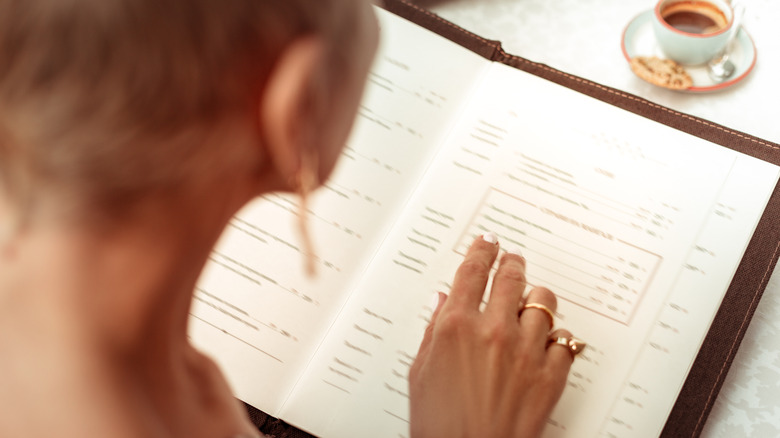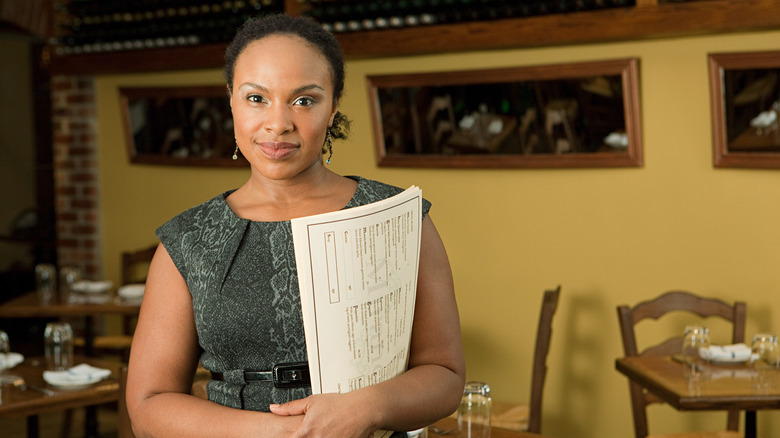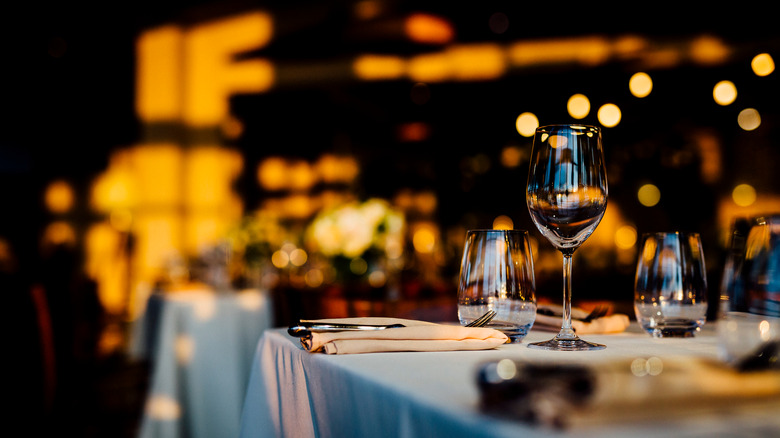The Sneaky Tactics You Should Be Aware Of While Scanning Menu Prices
Whether you are a major foodie or a fan of casual fare, there are probably few activities more enjoyable than going out to eat. Getting to sample a well-prepared meal by a professional chef — not to mention taking a night off from cooking and cleaning in your kitchen — is one of life's great delights. So it's no surprise that most Americans dine out quite often. According to a 2019 survey, over 20% of Americans eat out at least once per month, while a significant 30.52% dine do so a few times a month, and over 24% eat out several times a week, per Statista.
However, while dining out is certainly a fun experience, there is one place where it might not be quite so enjoyable: your wallet. There is no denying that eating out is far more costly than cooking at home, even if you don't tend to frequent the most expensive places. Americans spend nearly half their food budget, an average of about $2,375 each year, on restaurants and takeout, compared to an average of about $4,942 on groceries, according to The Ascent. But while eating out in general is costly, many restaurants employ some sneaky tricks to ensure you spend even more money at their establishments than you might have intended.
Restaurants manipulate menu designs to encourage spending
Restaurant menus, in particular, are designed in a specific way to entice customers to spend money without even realizing it. Menu design is such an essential part of the restaurant experience that some establishments even hire menu engineers, whose sole role is to create the most profitable menu possible by "utilizing data, research, and industry knowledge," according to Menu Engineers. And one of the most effective ways to create a profitable menu is by using psychological tricks when they present the price itself.
Customers mainly look at a menu for two reasons: to see the items the restaurant offers and to see what price they are charging. While that seems pretty straightforward, there are plenty of ways restaurants can make you think you are spending less than you are, just by changing the way the price is displayed on the menu. Writing out the price and omitting the dollar signs makes people more likely to spend. A 2009 study by Cornell University reported that "guests given the numeral-only menu spent significantly more than those who received a menu with prices showing a dollar sign or those whose menus had prices written out in words." Showing the price underneath the item also makes the price stand out less, making people less likely to realize how much they are paying, Aaron Allen & Associates reports.
Restaurants try to increase profitability
However, the pricing is far from the only part of the menu restaurants manipulate to get their customers to spend more. Restaurants also employ other design tactics to make their menus more attractive to customers. In some instances, they add photos to the menu to visually appeal to all of their customer's senses. Additionally, flowery descriptions of the food can make customers feel that they are getting more bang for their buck. "The more copy you write on the menu item, the less it costs in a customer's mind because you're giving them more for their money," menu engineer Gregg Rapp explained to Mental Floss.
Furthermore, the menu isn't the only place where restaurants try to psychologically trick you into opening up your wallet. They also employ several other tactics around ambiance, item selection, and service to generate as much profit as they can from guests as soon as they walk in the door. Low lighting and slow music can encourage customers to linger over their meals and spend more, while upbeat music and bright lights encourage turnover, per Go Banking Rates. And, of course, friendly servers often try to upsell their customers, encouraging them to purchase more than they ordinarily would. So while treating yourself to dinner at a nice restaurant is certainly a worthy indulgence, you might want to be aware of these sneaky tricks restaurants play the next time you dine out.


